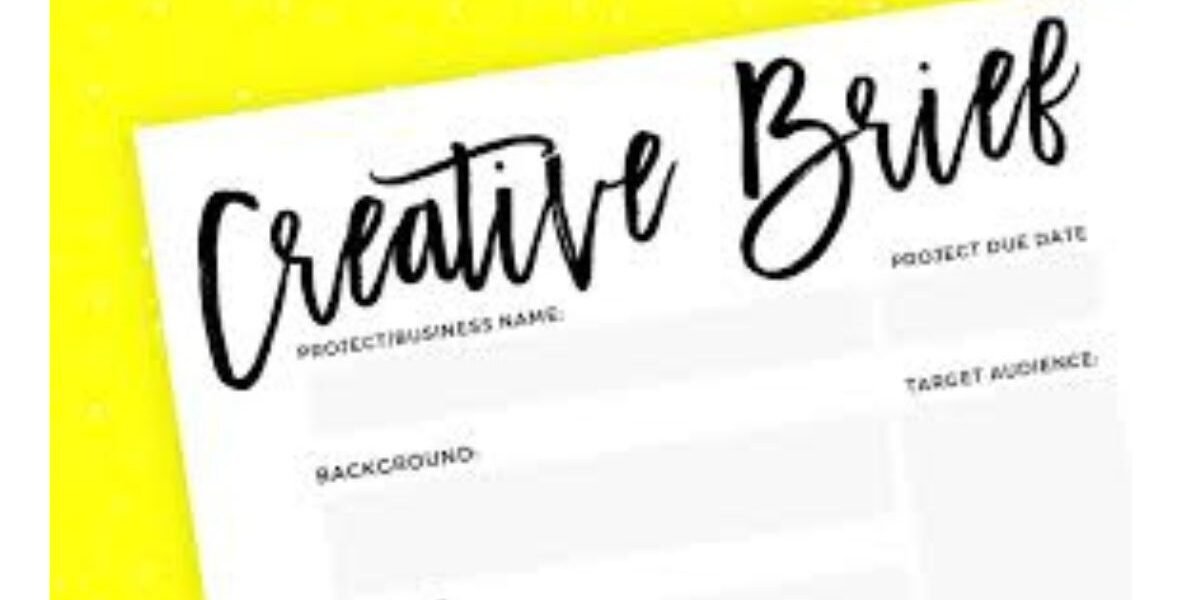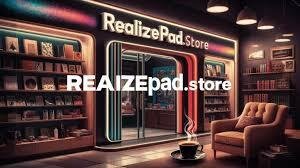AI generated graphic design briefs are documents created by artificial intelligence to guide design projects. They include details like project goals, target audience, and design style. These briefs help designers understand client needs clearly and quickly.Using AI generated graphic design briefs saves time and improves communication. Imagine no more back-and-forth emails or confusing instructions. These AI-powered briefs provide a fast, reliable way to start any design project.
With the rise of AI, generating graphic design briefs has become faster and more efficient. These tools automate the brief creation process, ensuring that designers get clear, detailed instructions without delay.
What Are AI-Generated Graphic Design Briefs?
At its core, AI generated graphic design brief uses machine learning algorithms to produce concise, project-specific briefs for designers. Rather than manually creating a brief from client needs, AI tools collect input from the client in the form of guided questionnaires or data collection, then automatically form a document that outlines the scope, goals, and deliverables of the project.
The process requires detailed input into the machine about branding specifications, target audience, and the style of desired design. According to this data, an AI processes the information gathered and develops a concise and structured brief that designers can hence adhere to. This process saves time and ensures that there are no misleading expectations from the beginning of a design project both from designers and their clients.
Advantages of AI Generated Briefs
Time-saving: AI applications quickly create briefs rich in details, which means the designer can start working sooner.
Consistency: AI produces a standardised form for each brief, which makes the whole process easier for designers to understand and stay on track.
Accuracy: AI cuts down on human mistakes and miscommunications, and therefore reduces the amount of revisions that may be involved with designed work
How Do AI Generated Graphic Design Briefs Work?
The process of creating an AI-generated graphic design brief involves a few straightforward steps. First, the client inputs project-related data into the AI tool, including preferences, deadlines, and visual inspirations. The AI then analyses this information, applying algorithms to ensure all the necessary components are covered in the brief.
Following synthesis by the AI, it produces an elaborative briefing document outlining the overall aesthetic, guidelines for content, and objectives of the project. It provides designers with a single document carrying all the crucial information so they do not need to come to the creative task after spending their precious time garnering key points from vague or non-elaborative instructions.
Example of AI Brief Components
Project Overview: General overview of the project, including the purpose and main objectives.
Target Audience: Detailed description of who the design is meant to reach.
Style Guidelines: Instructions in terms of color schemes, typography, and overall visual aesthetics.
Deliverables: A clear list of what can be expected at the conclusion of the project-such as posters, digital assets, or brand logos.
Free AI-Generated Graphic Design Briefs
One of the most enticing advantages of an AI-created brief is that free web-based tools are available. Most the platforms give the free version of the AI brief generator tool, therefore any freelancer, startup, or even small business without much of the budget for their design process can use it. These tools basically will cover the most elementary operations, which would be necessary to manage a well-structured brief without involving too much financial investment.
The free versions of AI brief generators, when available, may only provide rudimentary options for how to input. This is usually sufficient for small projects or straightforward requirements. Sure, they might be missing premium features such as linking with other design platforms or greater personalization, but the tool still does save a lot of time and demonstrates consistency in producing your briefs.
Advantages of Free AI Brief Tools
Cost-effectiveness: The free tools mean that the briefs can be created without additional costs and are perfect for small projects or any pocket-picking business.
Easy to use: Most free tools are developed with user-friendly interfaces, guiding clients step by step with minimal effort.
| Free AI Tools | Key Features |
| Briefsly.com | Basic input form, quick output |
| Canva Brief Generator | Limited customizations, good for visuals |
| Logojoy Brief Tool | Focused on logo creation |
Free AI-Generated Graphic Design Briefs Online
For developers who would like to have free graphic design briefs created without spending a penny, there are many online free AI generated graphic design brief tools. These online generators are convenient for any team to use anywhere with access to the internet. Most of these services ask the users to fill out an intuitive form whereby one can describe his/her design needs in simple terms.
Once submit, information is process in seconds to generate a structure brief that can be download or sent to a designer directly. This simplicity is popular because this system appeals to small freelancers seeking a reliable and easy-to-use solution to small projects.
Best Platforms for Free AI Briefs Online
Several websites offer a free brief generator for users. However, each website has the potential for either poor or pretty good briefs. Most free tools will get the basics, but premium is going to be a little more flexible and detailed in most cases.
Designify: This tool allows users to customize briefs and has a selection of project templates.
Uizard: Focuses on UI/UX design. Offers auto-briefing based on user input, free for small projects only.
The Emergence of AI-Generated Briefs in Web-Based Design Tools
Online design platforms, including Canva and Figma, introduced AI-generated design briefs in their systems, allowing users to have built-in solutions to design planning. These online platforms, known for having a friendly design interface that non-designers can easily use, integrated AI tools to help them express their ideas with clarity and speed to professionals.
The reason behind the growth of these tools is the ever increasing demand for AI generated graphic design briefs on the net. Users seek ways to simplify the initial process of a design. The online design tools were thus integrate with brief generators, which enabled their users to easily transition from concept generation to execution with no chance of miscommunication between the client and designer.
Brief Generator Graphic Design: Automated Solutions for Complex Projects
A brief generator for graphic design could be a pretty all-inclusive solution when working with more complex projects, incorporating advanced AI capabilities. More than just compiling the most basic information, these generators can predict potential design challenges and suggest alternative approaches by referencing successful projects in the past. Such predictive abilities make AI tools invaluable to designers working with big branding programs, multi-platform campaigns, or intricate visual identities.
Brief generators allow designers to better understand clients’ expectations and constraints on each project, so being aware of them in advance will allow time and budget management better. More usefully, an AI system added the ability to rapidly rework briefs in real-time according to varying input or changing project goals without slowing down on the design process.
Features of Advanced Brief Generators
Predictive Analysis: Based on the project’s objectives and past results, AI algorithms may come up with alternative ways.
Customization: The specialized tools enable the possibility of greater customization of design briefs in meeting the unique needs of more complex projects.
Real-time Adjustments: Designers and clients may get to change briefs in real time, hence flexibility along the entire project lifecycle.
The Future of AI Generated Graphic Design Briefs
The more advanced AI becomes, the more advanced graphic design briefs generated by AI will be. Designers are likely to find that AI systems could be capable of not only reading written instructions but also interpreting visual references, mood boards, and even user feedback from past designs to create highly personalized briefs.
Further, AI tools in the future will be able to give designers direct access to brief generation tools inside their design software, removing the need to go around and about the different external platforms, and streamlining the workflow altogether. Changes in creative platforms and AI In many ways, the integration of AI in creative platforms disrupts the designer’s process altogether. It makes the whole process more intuitive while the field itself takes all that fast-paced can take.
Expected Developments in AI Brief Tools
The integration with design tools; using a designing application like Sketch, and the most popular Adobe Creative Cloud.
Voice-to-Brief Capabilities: The capability of producing briefs from voice commands adds an extra layer of efficiency to the process.
Enhanced Collaboration: AI tools that facilitate real-time collaboration between clients and designers, minimizing miscommunication and errors.
| Expected Features | Impact on Design |
| Voice-to-Brief Generation | Faster input and brief creation |
| AI Visual Interpretation | Briefs that include visual guidance |
| Design Tool Integration | Streamlined workflow |
Conclusion
Artificially generated graphic design briefs are revolutionizing the design process: efficient, accurate, and consistent, something traditional methods often fail to provide. For free and paid online tools, designers and clients may work faster on starting up projects, clearly communicating and facing fewer revisions. This is why brief generators using AI will increasingly be part of the design workflow-projects that will not only be faster but also more suited to specific needs in the future.
Working with AI generated graphic design briefs calls for accepting a future in which creativity meets cutting-edge technology, makes complicated projects simpler, and enables designers to focus on doing what they do best: creating fabulous visual work.
FAQs
What are AI generate graphic design briefs?
AI generate graphic design briefs are outlines of a project create by artificial intelligence. These are project information, such as objectives, target audiences, style preferences, and deliverables. The AI gathers this using user input and develops a clear, structured brief that the designer can use.
How do AI generated graphic design briefs work?
These briefs are create by inputting specific project information into an AI tool. The AI analyzes the data, such as branding guidelines, project objectives, and visual preferences, to produce a tailored document. This brief helps designers understand the project’s scope and requirements more effectively.
Are AI generate graphic design briefs free to use?
Yes, most platforms offer free tools to let users create AI generated graphic design briefs, though premium versions could have more features and flexibility, especially for more complex design needs.
Can AI generated briefs replace human-written briefs?
AI generated briefs can help streamline the creation of briefs but might not replace human written briefs entirely, especially with complex or highly customized projects. They do save so much time and reduce the possibilities of miscommunication while still ensuring good graphic designs for those projects requiring some details in instructions.
What are the advantages of AI generate graphic design briefs?
The main advantages are saving time, being more efficient and reducing miscommunication. Briefs generate by AI are structure, uniform, and quick to produce, allowing designers the head start on projects through clear direction.
Are AI generate briefs customizable?
Many AI tools also allow customization. Users may input specific details of projects such as branding guidelines, color schemes, and visual style preferences. Some advanced tools offer deeper customizations to suit more complex projects.
Read more about Technology at USA UP TREND




